
News
Antarctica during autumn: researchers joined a new expedition on board RV Polarstern
While tulips were flowering in the Netherlands, researchers from Wageningen Marine Research, together with partners from the German Alfred-Wegener-Institute (AWI) and the Netherlands Institute for Sea Research (Royal NIOZ) were on the German icebreaker Polarstern conducting research in Antarctic waters. In the autumn of the southern hemisphere days were getting shorter and colder, causing the sea-ice to grow again. Because most of the research performed in the Southern Ocean is done during the summer months, this autumn expedition can help to gain new knowledge on life cycles of various species in the Southern Ocean.
Antarctic species communities: from the bottom to the sky
The researchers are part of the EWOS (Eastern Weddell Sea Observation System) program, where, together with colleagues from AWI and NIOZ, they study different species communities in the Southern Ocean. The international and multidisciplinary EWOS program was developed to potentially set up a long-term monitoring program in a characteristic region of the Weddell Sea. To do this, they took samples of sediment and benthic species and recorded the sea floor using cameras.
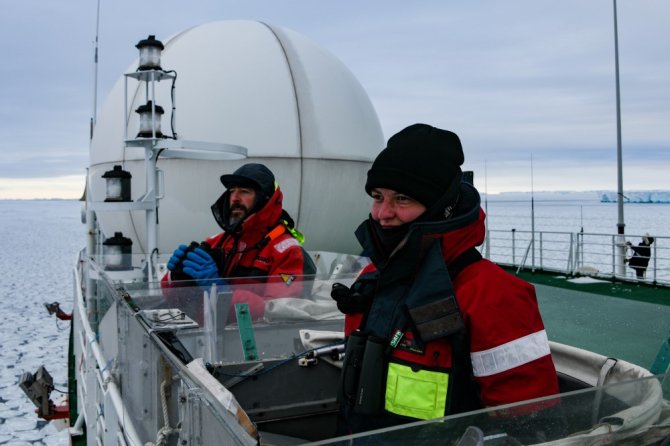
Pelagic animals such as fish, krill and other zooplankton were caught with different types of fishing gear. Algae in and under the sea ice and sea-ice associated zooplankton were sampled as well. To complete the picture, top predators such as marine mammals and seabirds were recorded systematically from a post outside situated on top of the ship’s bridge. By doing this, the researchers hope to gain more insights in the different habitats and how these may influence each other.
The Southern Ocean in autumn
The scientists left Cape Town in South Africa during the first days of March and arrived in Punta Arenas (Chile) during the last days of April. This expedition of two months took place in the southern hemisphere autumn season and differences with the more common summer cruises were clearly visible. After a summer of a historically low sea-ice extent, the sea ice now started growing again by forming small round ice-floes, the so-called pancake ice, which will eventually grow together to form bigger floes. Also the weather was not much like ‘summer’ anymore. The temperatures decreased below -20°C which, together with the wind chill, can feel like -37 °C. Low pressure systems brought a lot of snow and wind. Heavy storms moved over the region, making the work impossible for hours or occasionally even for days.
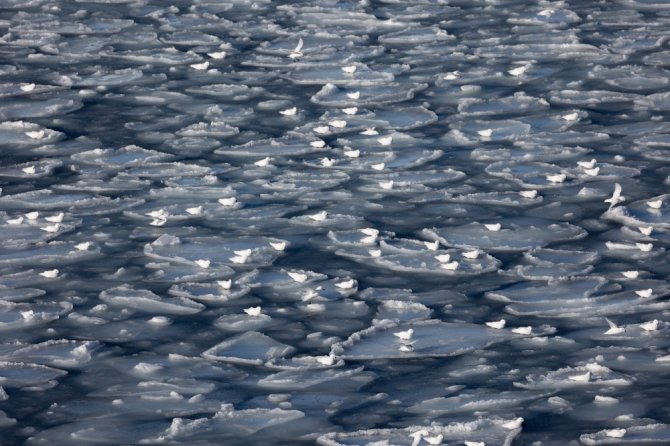
Differences to the summer season
The distribution of various species also differed from summer expeditions. After the breeding season, some seabirds migrate northwards to overwinter in more temperate regions. This leads to low numbers of birds for some species. Penguins concentrate along the new-forming ice edges. Seals that have had their pups early in spring on the sea-ice were now spread widely over the few remaining old ice floes.
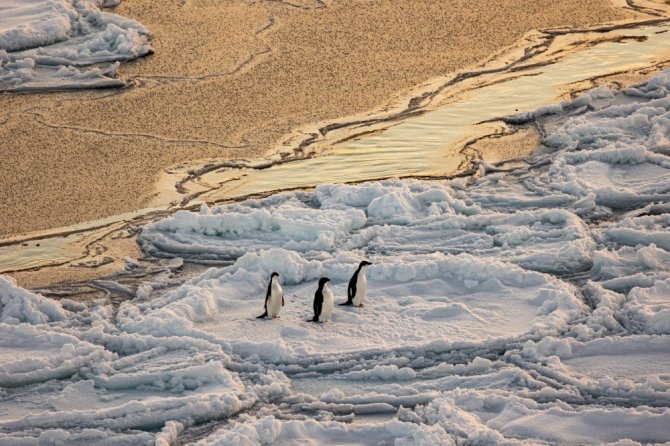
Long shadows
In summer, 24 hours of daylight allow for continuous top predator surveys. However now in autumn, daylight was restricted to ten hours and continued to decrease. Additional to surveys from the ship, top predator counts were conducted by helicopter. This helps to cover larger areas and to obtain additional information on species distribution and densities.
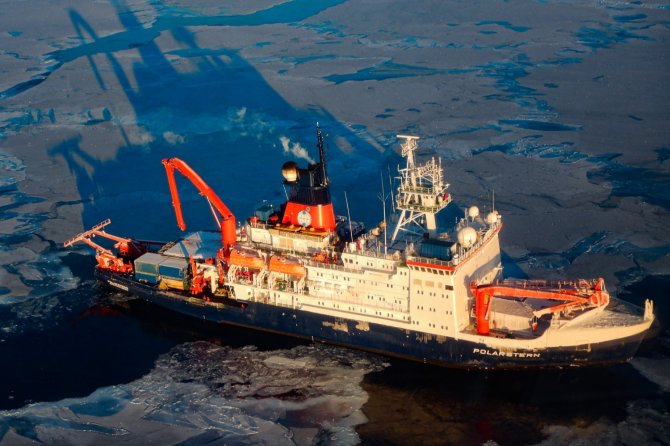
Fishing under the ice
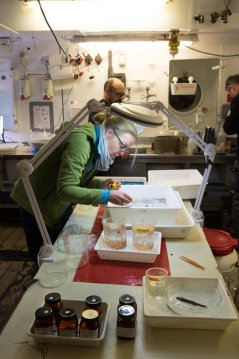
One of the fishing gears on board is the 'Surface and Under-ice Trawl' (SUIT), developed by Wageningen Marine Research researchers, which can sample the open water surface and the water directly underneath the sea ice. Researchers have sampled the water under young sea ice once during this expedition and found many ice amphipods that are associated to growing young sea ice and that are rare in summer. It is still unclear where they occur the remaining months of the year. With another fishing net, the Rectangular Midwater Trawl (RMT), also deeper water, up to 500 meters depth, can be sampled. The krill they found during this expedition was older than expected for these deep water layers.